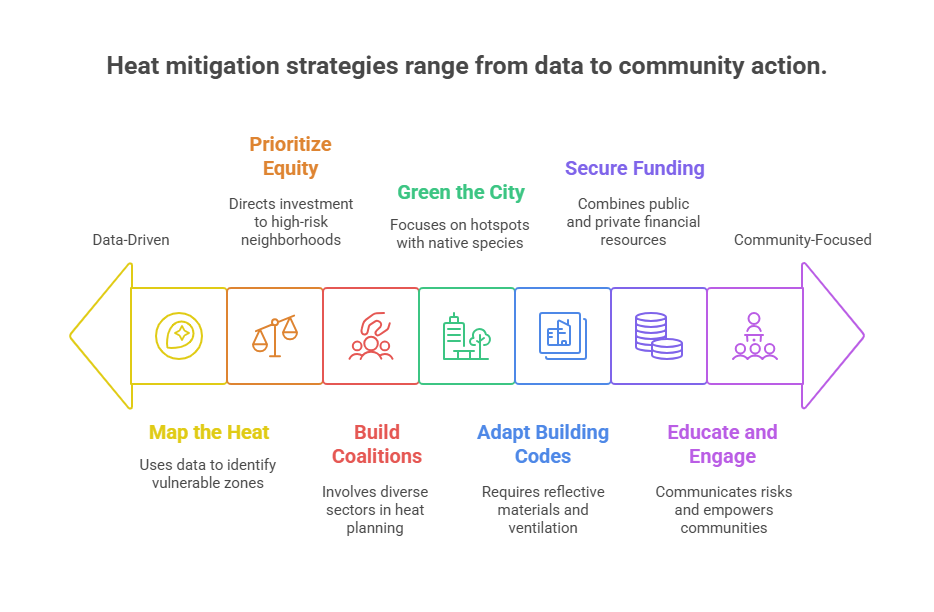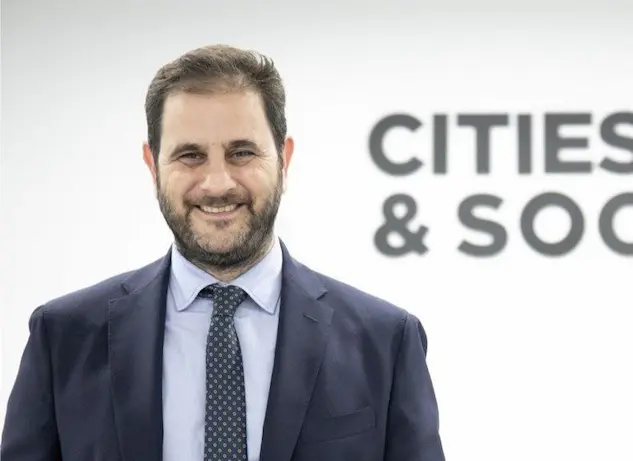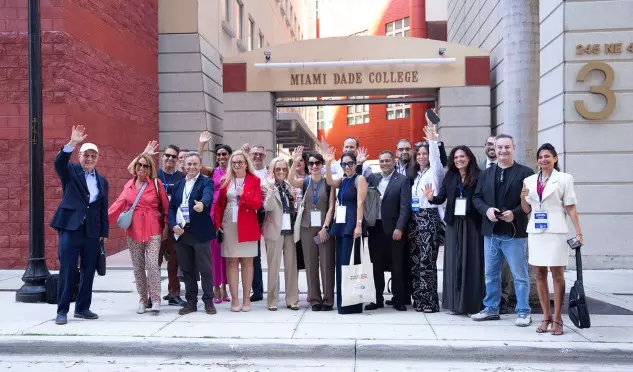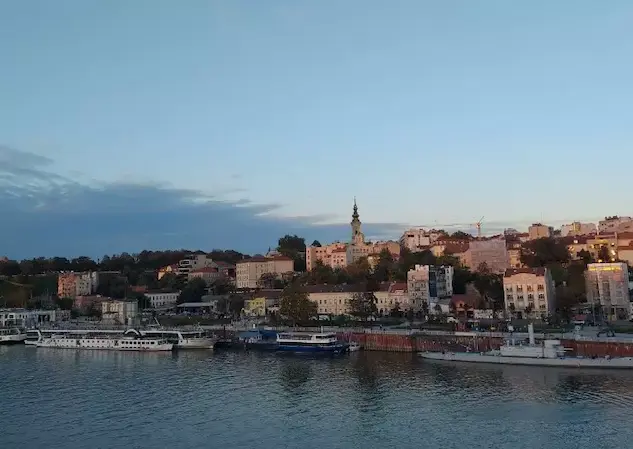In From Risk to Resilience: Urban Heat Adaptation in Action, we explored how data-driven design and climate-responsive solutions are reshaping heat-vulnerable cities into models of urban resilience. Building on that foundation, we now turn our focus to how cities can confront rising urban temperatures through inclusive, evidence-based strategies. This article examines how inclusive, evidence-based strategies can confront these inequalities and move to a shared goal: cool cities for all. We highlight scalable interventions – from policy shifts to simple, low-cost solutions like white roofs – that can make city cooller.

Who gets to be cool? The equity dimension
As temperatures rise, not everyone suffers equally. Urban heat disproportionately affects low-income neighborhoods, communities of color, elderly populations, and people experiencing homelessness. These groups are more likely to live in areas with less tree cover, limited green spaces, older infrastructure, and poor access to cooling.
In Paris, for example, during the deadly 2003 heatwave that claimed over 15,000 lives across France, a disproportionate number of deaths occurred among elderly residents in poorly ventilated homes without air conditioning. These tragic outcomes underline the importance of climate adaptation policies that prioritize social equity.
According to the 2024 European State of the Climate Report compiled by the Copernicus Climate Change Service (C3S) and the World Meteorological Organization (WMO) , “strong heat stress” begins when the maximum feels-like temperature, based on the Universal Thermal Climate Index (UTCI), reaches at least 32°C. And as such heat events become more common, cities are increasingly recognizing the need for inclusive strategies that protect their most vulnerable residents.

Cities and policymakers are exploring systemic strategies to address the disproportionate impact of extreme heat on vulnerable communities. For instance, New York City’s Cool Neighborhoods NYC program targets the most heat-vulnerable areas by prioritizing tree planting, enhancing green infrastructure, and involving residents in community-led resilience planning. The goal is not only to cool the city but also to reduce health disparities.
Barcelona’s Climate Shelters Program transforms existing public schools into accessible, climate-resilient spaces during the summer, offering shade, ventilation, and greenery, especially in heat-vulnerable neighborhoods. This initiative is part of the city’s broader response to the increasingly harsh effects of climate change across the Mediterranean: rising temperatures, prolonged droughts, and extreme rainfall. While cutting emissions remains essential, city officials recognize that adaptation measures are equally urgent. Climate shelters help minimize health risks from excessive heat – particularly among the elderly, children, and people with chronic conditions – while also preserving the livability of public spaces and reducing the need for energy-intensive indoor cooling.
Designing cool cities for all: innovation and systemic thinking
Trees and cool roofs are important, but long-term urban resilience requires deeper transformation. Rethinking how we plan, build, and govern cities in the face of climate change. Heat resilience must be integrated into every layer of urban planning, infrastructure, and technology.
Digital twin cities are becoming vital tools for modeling and managing climate risks. Singapore, for instance, uses a real-time 3D digital twin to simulate how buildings, trees, and surfaces influence local temperatures—allowing planners to test cooling strategies before implementation.
Satellite data and AI are also being leveraged to map urban heat exposure. For example, the EU’s Copernicus Climate Change Service offers high-resolution climate data to help cities assess risk and track mitigation outcomes.
Cities are also revising development standards to include climate adaptation. Vienna, Toronto, and Copenhagen now incorporate cooling into zoning codes, green space requirements, and building guidelines. In Dubai, master plans specify targets for shading and surface reflectivity (albedo) to counter extreme heat.
Tackling urban heat requires a systems approach, with collaboration among public agencies, developers, communities, and tech providers on different levels. Notable examples include, for example, he Global Cool Cities Alliance, which helps cities update policies on building codes, road materials, and procurement to reduce heat.

What cities can do: practical steps toward cool cities for all
Map the heat
Start with data. Use satellite imagery, citizen science, and IoT sensors to create urban heat maps and identify the most vulnerable zones. Very interesting transformation the data into more visual products, such as maps be demonstrated by Copernicus Climate Change Service (C3S) and the World Meteorological Organization (WMO). You can read about the maps of high temperatures in Belgrade here.
Prioritize equity
Direct investments toward neighborhoods with the least green space and highest vulnerability. Researchers propose using climate justice indicators to link heat exposure with social resilience and identify areas with unequal risk and responsibility.
Build cross-sector coalitions
Involve departments of health, planning, transport, housing and local communities in coordinated heat action planning.
Green the city strategically
Focus on heat hotspots, schoolyards, transit corridors, and public housing. Prioritize native species with low maintenance needs.

Adapt building codes
Require reflective materials, shading, and ventilation. Offer incentives for retrofitting roofs and facades. For example, white roofs are especially effective and visible.
Secure diverse funding
Combine public funds, climate finance, local taxes (e.g., stormwater fees), and partnerships with business and civil society.
Educate and engage
Clearly communicate both risks and solutions to the public, and empower communities through heat preparedness campaigns and accessible cooling centers.
Urban heat is no longer a seasonal inconvenience – it’s a structural, climate-driven threat to health, equity, and livability. Cool cities for all means reimagining urban systems, investing in innovation, and centering the needs of the most vulnerable. In the face of rising temperatures, cool cities are not a luxury—they are a necessity. And the decisions we make today will shape how resilient, inclusive, and habitable our urban spaces remain tomorrow.


